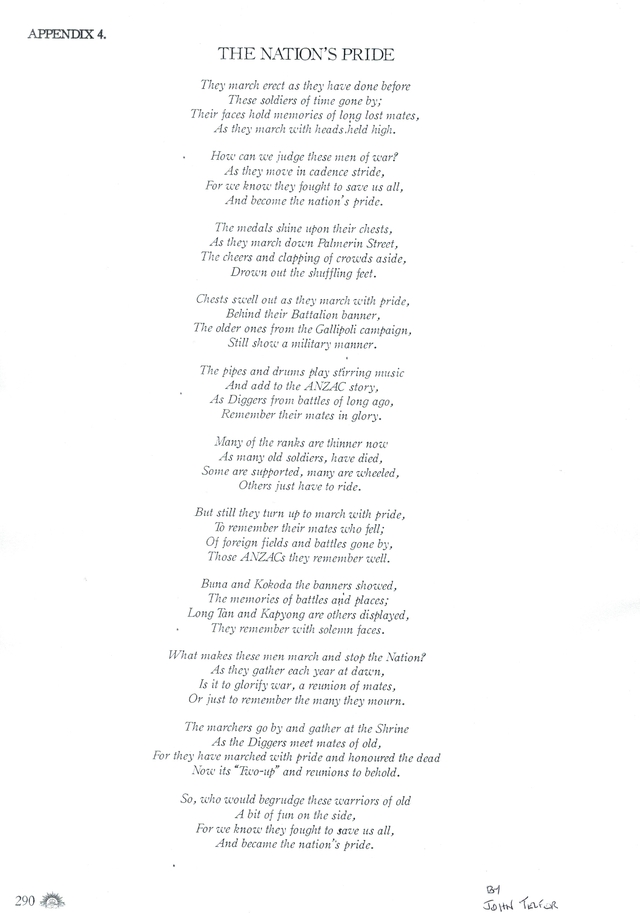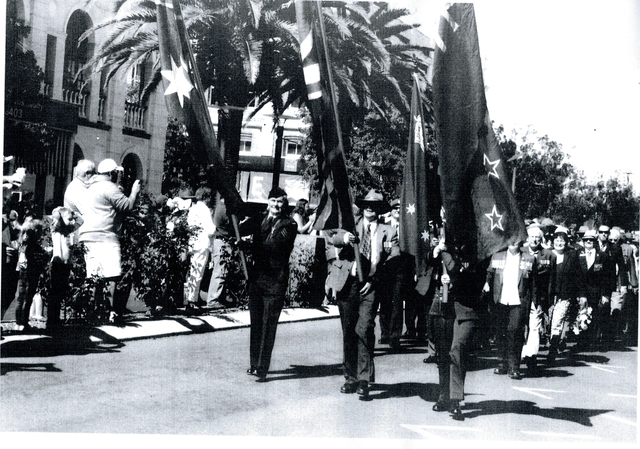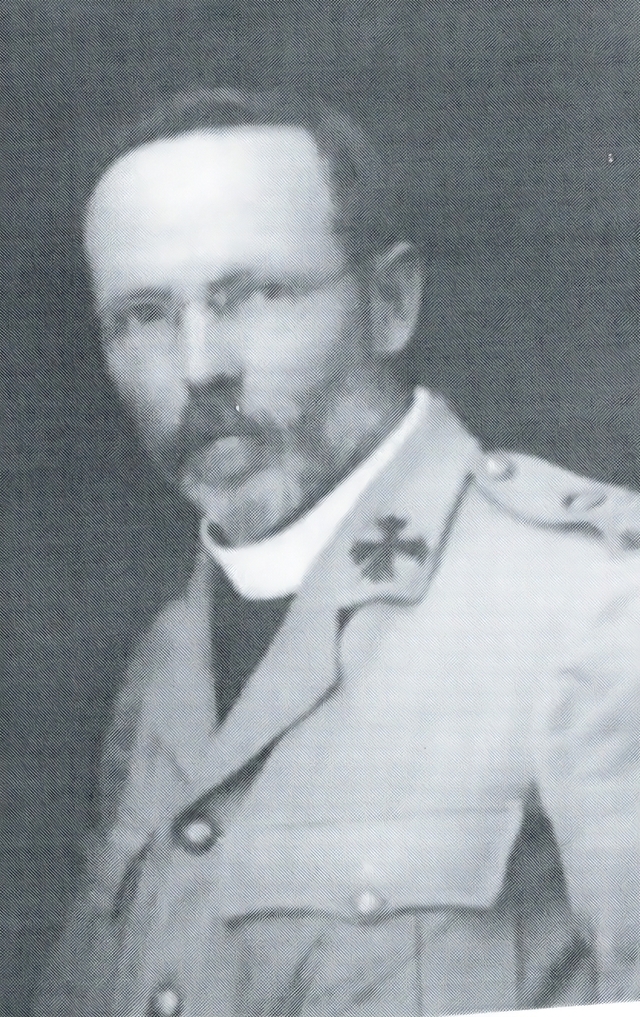The initial founder of the annual Anzac Day march was instigated by the actions of David Garland, a military Padre, who was born in Ireland on the 4th. October,1864 and migrated to New South Wales with his parents. Although trained in law he joined the Church of England ministry as a Deacon and served in various senior church roles up to 1892. At the outbreak of war in 1914 David volunteered for service and became a Senior Army Chaplain in Queensland from 1914 to 1917, and served in the Middle East as a Lieutenant Colonel where he founded 8 clubs for Australian troops. For his service and dedication there he was awarded the knighthood of the Gold Cross of the Holy Sepulchre, by the patriarch of Jerusalem.
David returned to Queensland in 1920 and once again became active in the social and political life of the state championing such causes as immigration, and the plight of returned soldiers. He became an important and loud voice for the creation of ANZAC ceremonies. He shared the post of honorary secretary of the ANZAC Day Commemoration Committee and helped inspire the birth of the Returned Soldiers and Sailors Imperial League of Australia, which was formed in 1915, to act as a voice for the returned man.
David Garland initiated the ANZAC Day march and returned soldier’s luncheon, as well as the ritual of 2 minutes silence, church services, and the wreath-laying ceremonies which is an integral part of the ANZAC Day service right up to the present time. One of David Garland’s enduring legacies was the beginning of an ANZAC Day Trust fund raised from the sale of blue silk badges to help in the care of soldier’s graves at home and overseas. He organized the first ANZAC Day march which occurred in Brisbane on 25th April 1916 with over 8,000 men marching through the streets. Garland also campaigned for the Government to make ANZAC Day a public holiday and this became a reality in 1927 when all states became involved. David Garland died in 1939 aged 75 but for his energy and resourcefulness for the ANZAC legend, and what he achieved for return men, must never be forgotten.
Meanwhile, the small rural township of Warwick had formed the Soldier’s Help Society and decided to follow New South Wales with the same objectives. A Soldier’s Club was formed in 1919 as a Memorial Club and while the Warwick War Council was active, and many social and church groups were supportive of returned men, it was suggested that a committee be formed to combine these groups. On 5th September 1917, a meeting was held at the Majestic Café in King Street, and the Warwick Sub-Branch of the R.S.S.I.L.A became a reality with Mr. Aitkin formally elected as the first President. From that time on the Warwick Sub-Branch became very active in the welfare of the returned Soldier, Sailor and Airman and members of the women’s services. It included a church service, a march and other commemorations in the evenings. Hundreds attended Slade Park where a parade of groups and benevolent societies were involved when the marchers arrived at the park. In later years, the march was changed to a march through the city to the ANZAC Shrine in Leslie Park. All proceeds of paid activities at Slade oval went to the returned soldier’s funds.
As this is only a brief history, of the ANZAC Day march in Warwick it possibly helps to clarify a couple of points as to the accuracy of some comments that appear in newspapers and general conversations as to what ANZAC Day is all about. One very obvious fallacy about ANZAC Day is that it is a celebration as sometimes written; No! It is a commemoration for those thousands of young men who gave their lives in Australia’s conflicts at Gallipoli, and later, in Australia’s military and peace keeping deployments around the globe. There is another major concern, is that the use of the poppy is seen on ANZAC Day when it is worn as a symbol of ANZAC. No! It should be reserved for REMEMBRANCE Day on 11th November. What should be worn, if available, is a piece of Rosemary which grew on the slopes of the Gallipoli peninsula in WW1. The poppy symbolizes the poppies that grew in Flanders fields in WW1, while the Rosemary is a symbol of the fierce battles on Gallipoli in WW1.
A lot more could be written about ANZAC Day, but I think the words of a young journalist who wrote an article a couple of years ago about the importance of REMEMBRANCE Day, but her words also connect with ANZAC Day with the same sentiments when she said in the Brisbane Courier-Mail:
“Now, 0ver 100 years from the first REMEMBRANCE Day, we must not let the tradition
crumble into distant history. There may be no more left who served, but the need
to remember does not diminish. Their sacrifice and pain cannot be overshadowed
by our modern ignorance and entitlement. For how we treat our past reflects our future.
One minute of silence. It seems so inadequate for all that was sacrificed, but it is all we
can do. That is our duty”.
We can only hope that our country with its proud military history can educate the ignorant and the youth of Australia, to take the opportunity to remember that these two days in our nation, ANZAC Day and REMEMBRANCE Day, are never forgotten; and that the flame of the ANZACS is never extinguished. It is our national duty to ensure that the legend continues to be passed down to each generation for many years to come.
LEST WE FORGET.









